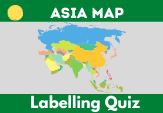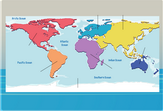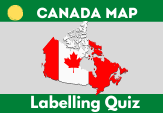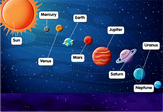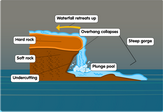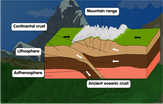Hurricane diagram
Hurricanes can start like any regular storm, but with the right conditions, they can turn into much larger and more destructive weather systems.
To clear up any confusion first, a hurricane is the same to a typhoon or cyclone. These different names are used based on where the storm develops. Hurricanes refer to the storms as they appear over the North Atlantic Ocean or Northeast Pacific Ocean. In the Western Pacific Ocean, they’re known as typhoons. In the Indian Ocean and the southern parts of other oceans, they are referred to as cyclones.
We can distinguish three main parts found in all hurricanes. The most obvious part is the eye – the circular space at the storm’s center where the weather is relatively calm. Surrounding the eye, however, is the eyewall, in which you will find the heaviest rains and strongest winds in the entire hurricane.
We can also observe spiralling arms around the storm. These are rainbands – a series of heavy clouds that can cause a prolonged period of heavy rainfall as they pass through an area.
Keep this hurricane diagram close by for a handy illustration of the parts of a hurricane and the meteorological causes for this destructive storm system.

